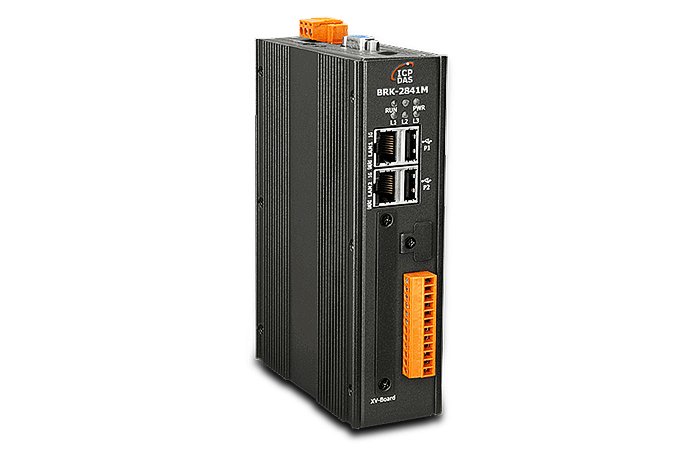
ICP DAS has presented a new MQTT server - BRK-2841M, which can connect to a large number of MQTT devices.
The MQTT (Message Queuing Telemetry Transport) protocol is implemented based on a publisher/subscriber architecture. In its network there is a server (Broker) responsible for the intermediate layer of information, and other devices can send information to the broker by publishing a topic, or receive information from the broker by subscribing to a topic.
BRK-2841M is an MQTT server that can connect to a large number of ICP DAS modules that support the MQTT protocol. For example, it can connect to data logger sensors such as DL-300 series capable of measuring CO, CO2, temperature, humidity and dew point. The collected on-site environmental parameters will be published to the BRK-2841M through the MQTT communication mechanism, and can then be monitored remotely by subscribing to the data from the BRK-2841M using a mobile device or SCADA software that supports the MQTT client.
Ethernet I/O modules of the MQ-7200M series are able to automatically publish collected digital I/O values to the BRK-2841M via MQTT. An MQTT client only needs to subscribe to or publish to the BRK-2841M to remotely monitor or change the status of discrete Ethernet output modules.

The BRK server is compatible with the MQTT protocol versions V.3.1, V.3.1.1 and V.5.0. It supports many features such as QoS message quality mechanism, message persistence mechanism, identity authentication, communication encryption, Last Will message and bridging function. The web interface setting method allows you to quickly configure the functions of the BRK-2841M. This reduces the burden of user configuration and subsequent maintenance of the broker.
In addition, the BRK-2841M provides bridging, clustering, load balancing and high availability features. Grouping multiple BRK-2841M devices provides a more reliable redundancy system that prevents field devices from stopping due to hardware or network failures.
Key features:
- Built-in database (MongoDB)
- Redundant architecture
- Supports complete information security mechanism
- HTTPS
- Broker rights management
- Publish/subscribe management
- Built-in MQTT broker
- Bridge function
- Clustering function
- QoS message quality mechanism
- Mechanism for saving messages
- Last message (Last Will)

